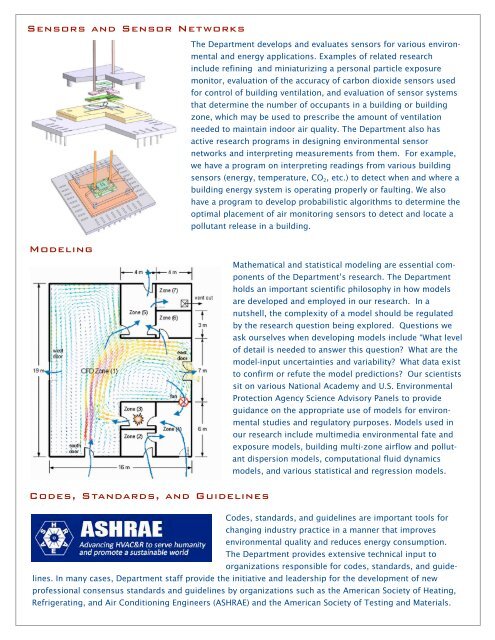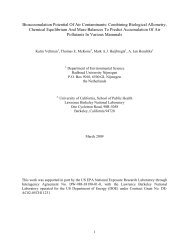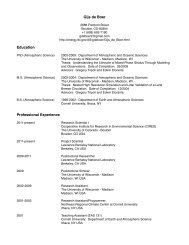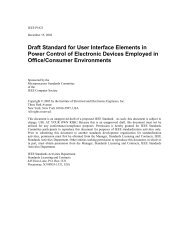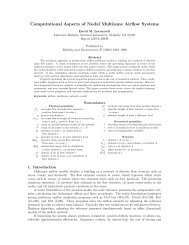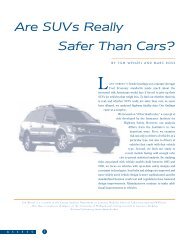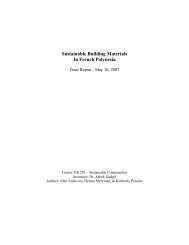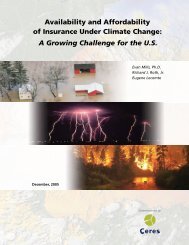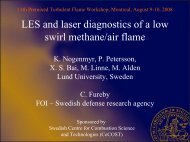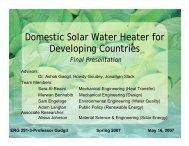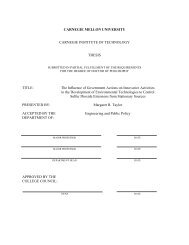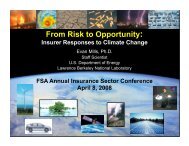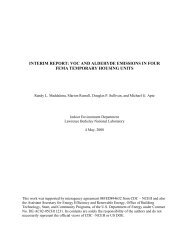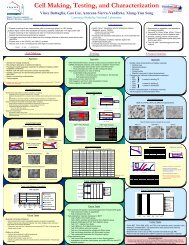Indoor Environment Department - Environmental Energy ...
Indoor Environment Department - Environmental Energy ...
Indoor Environment Department - Environmental Energy ...
You also want an ePaper? Increase the reach of your titles
YUMPU automatically turns print PDFs into web optimized ePapers that Google loves.
Sensors and Sensor Networks<br />
Modeling<br />
Codes, Standards, and Guidelines<br />
The <strong>Department</strong> develops and evaluates sensors for various environmental<br />
and energy applications. Examples of related research<br />
include refining and miniaturizing a personal particle exposure<br />
monitor, evaluation of the accuracy of carbon dioxide sensors used<br />
for control of building ventilation, and evaluation of sensor systems<br />
that determine the number of occupants in a building or building<br />
zone, which may be used to prescribe the amount of ventilation<br />
needed to maintain indoor air quality. The <strong>Department</strong> also has<br />
active research programs in designing environmental sensor<br />
networks and interpreting measurements from them. For example,<br />
we have a program on interpreting readings from various building<br />
sensors (energy, temperature, CO2, etc.) to detect when and where a<br />
building energy system is operating properly or faulting. We also<br />
have a program to develop probabilistic algorithms to determine the<br />
optimal placement of air monitoring sensors to detect and locate a<br />
pollutant release in a building.<br />
Mathematical and statistical modeling are essential components<br />
of the <strong>Department</strong>’s research. The <strong>Department</strong><br />
holds an important scientific philosophy in how models<br />
are developed and employed in our research. In a<br />
nutshell, the complexity of a model should be regulated<br />
by the research question being explored. Questions we<br />
ask ourselves when developing models include “What level<br />
of detail is needed to answer this question? What are the<br />
model-input uncertainties and variability? What data exist<br />
to confirm or refute the model predictions? Our scientists<br />
sit on various National Academy and U.S. <strong>Environment</strong>al<br />
Protection Agency Science Advisory Panels to provide<br />
guidance on the appropriate use of models for environmental<br />
studies and regulatory purposes. Models used in<br />
our research include multimedia environmental fate and<br />
exposure models, building multi-zone airflow and pollutant<br />
dispersion models, computational fluid dynamics<br />
models, and various statistical and regression models.<br />
Codes, standards, and guidelines are important tools for<br />
changing industry practice in a manner that improves<br />
environmental quality and reduces energy consumption.<br />
The <strong>Department</strong> provides extensive technical input to<br />
organizations responsible for codes, standards, and guidelines.<br />
In many cases, <strong>Department</strong> staff provide the initiative and leadership for the development of new<br />
professional consensus standards and guidelines by organizations such as the American Society of Heating,<br />
Refrigerating, and Air Conditioning Engineers (ASHRAE) and the American Society of Testing and Materials.


